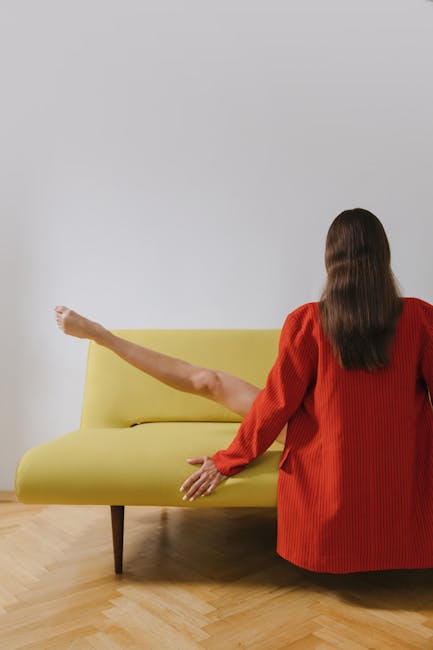Indoor Decor That Grows With You: Flexible Designs for Changing Lifestyles
Introduction
Our homes are reflections of ourselves, but just like us, they need to evolve. What worked in your first apartment might not suit your growing family or your evolving taste. That’s where flexible indoor decor comes in. Designing a space that adapts to your changing lifestyle, needs, and preferences is key to long-term happiness and avoiding costly renovations. This article explores adaptable decor ideas that grow with you, ensuring your home remains a comfortable and stylish haven, no matter what life throws your way.
Main Sections
Modular Furniture: The Building Blocks of Change
Modular furniture is the ultimate champion of flexibility. Think of it as building blocks for your living space.
- Sectional Sofas: Arrange and re-arrange to fit different room sizes and seating needs. Add or remove sections as required. Look for models with replaceable covers for easy style updates.
- Stackable Shelving: Create custom storage solutions that can be expanded or reduced as your collection of books, plants, or keepsakes grows.
- Convertible Coffee Tables: Transform from a coffee table to a dining table or workspace in seconds, perfect for small spaces that serve multiple purposes.
Neutral Palette with Pops of Personality
Start with a neutral base for walls and larger furniture pieces. This allows you to easily switch up the look and feel of a room without major overhauls.
- Wall Color: Opt for versatile neutrals like greys, beiges, or off-whites. These colors serve as a blank canvas for your evolving style.
- Accent Colors: Introduce pops of color through accessories like throw pillows, blankets, artwork, and rugs. These are easy and affordable to swap out as trends change or your taste evolves.
- Replaceable Accessories: Choose items like cushion covers, curtains, and lamp shades that can be easily replaced to reflect new styles or seasons.
Multi-Functional Spaces: Maximizing Utility
Design spaces that can easily adapt to different purposes. This is especially important in smaller homes.
- Home Office/Guest Room: Invest in a comfortable sofa bed and a desk that can be easily concealed when not in use.
- Dining Room/Playroom: A durable, easy-to-clean dining table can double as a play surface for kids. Store toys in attractive baskets or cabinets that blend seamlessly with the dining room decor.
- Living Room/Home Theater: Choose furniture that is comfortable for both lounging and movie watching. Consider a projector and screen that can be easily put away when not in use.
Smart Storage Solutions: Keeping Clutter at Bay
Effective storage is crucial for maintaining a tidy and adaptable home. Decluttering regularly will prevent a build-up of items that no longer suit your lifestyle.
- Hidden Storage: Ottomans with storage, beds with drawers, and benches with compartments are excellent for discreetly stashing away items.
- Vertical Storage: Utilize wall space with shelves, floating cabinets, and tall bookcases to maximize storage without taking up valuable floor space.
- Flexible Organizers: Use adjustable drawer dividers, closet organizers, and storage boxes to customize your storage solutions to fit your specific needs.
Embrace Natural Light and Plants
Natural light and plants are timeless elements that can enhance any space and promote well-being.
- Maximize Sunlight: Keep windows clean and unobstructed to allow as much natural light as possible. Use light-colored curtains or blinds that can be easily adjusted.
- Introduce Greenery: Plants add life and vibrancy to any room. Choose a variety of sizes and types to create visual interest. Consider low-maintenance options like succulents or snake plants if you have a busy lifestyle.
- Moveable Plants: Use plant stands or caddies to easily move plants around to different locations as needed.
Conclusion
Creating an indoor decor scheme that grows with you is an investment in your long-term happiness and comfort. By embracing modular furniture, a neutral palette, multi-functional spaces, smart storage solutions, and natural elements, you can design a home that adapts to your changing needs and preferences. Remember to declutter regularly and embrace new trends while staying true to your personal style. With a little planning and creativity, your home can become a sanctuary that reflects your evolving journey.




Post Comment